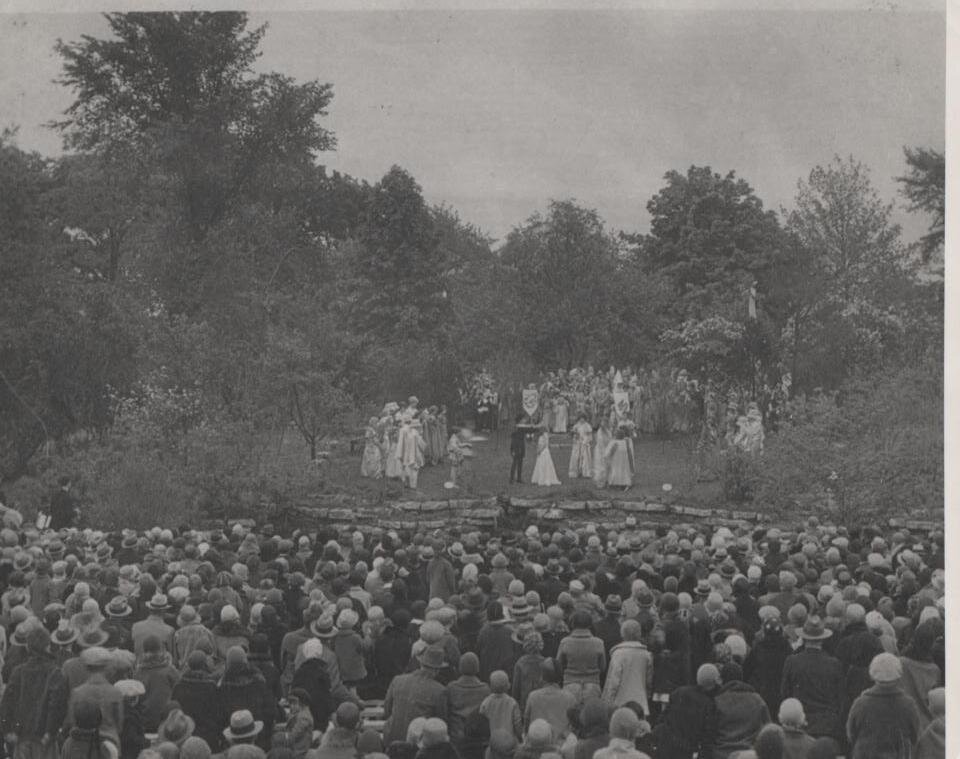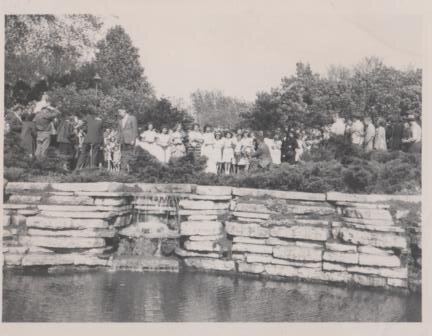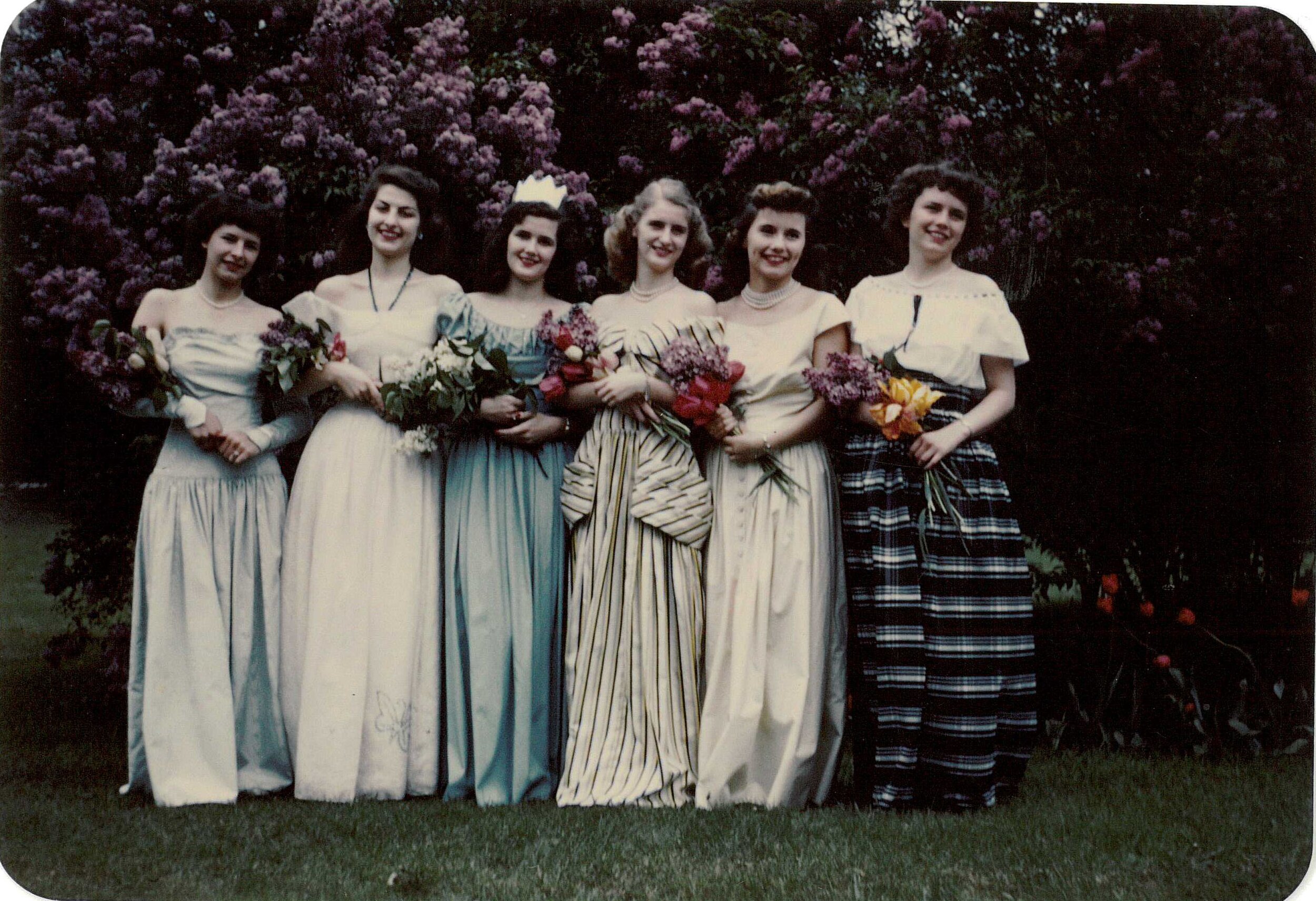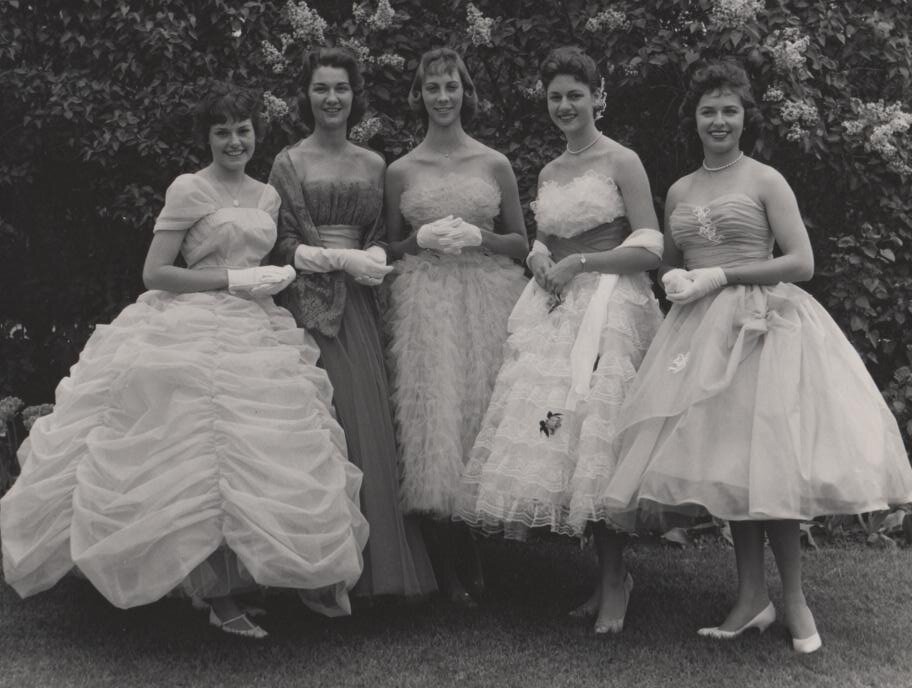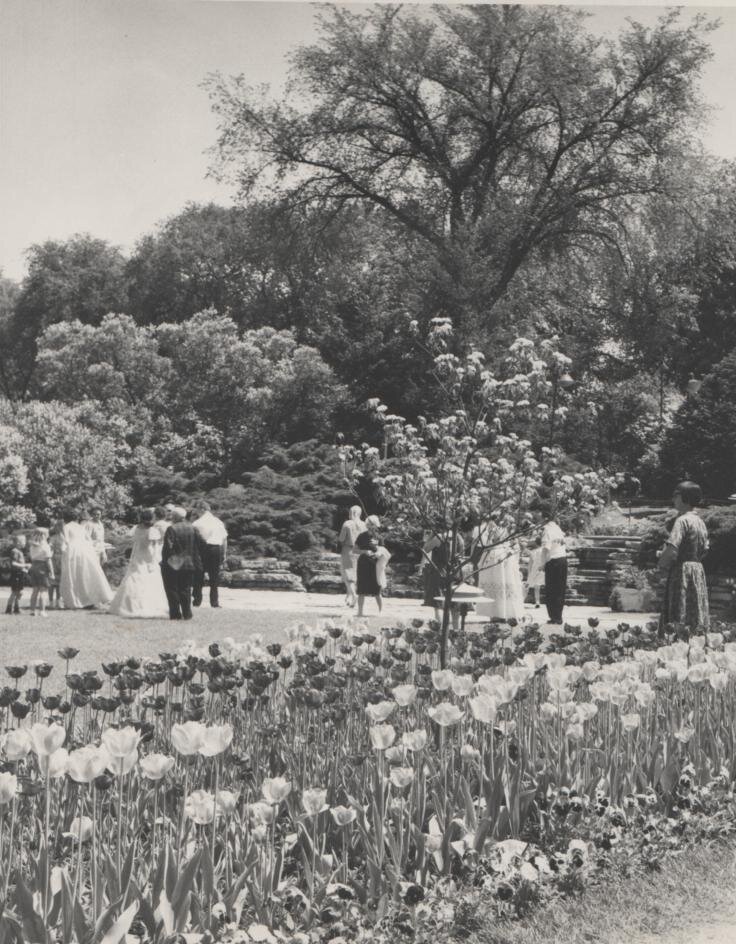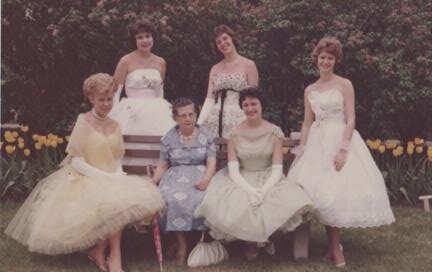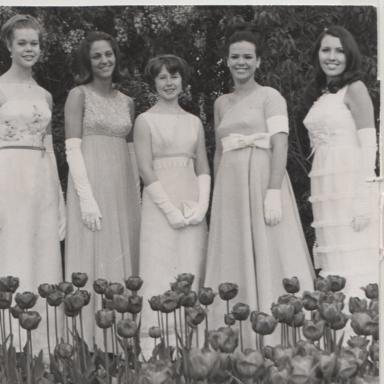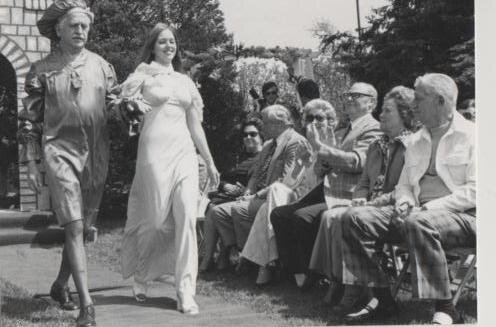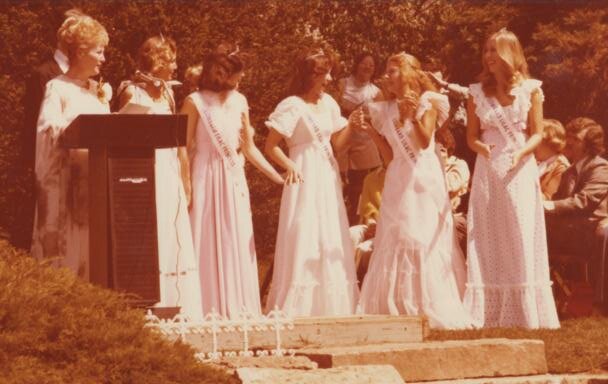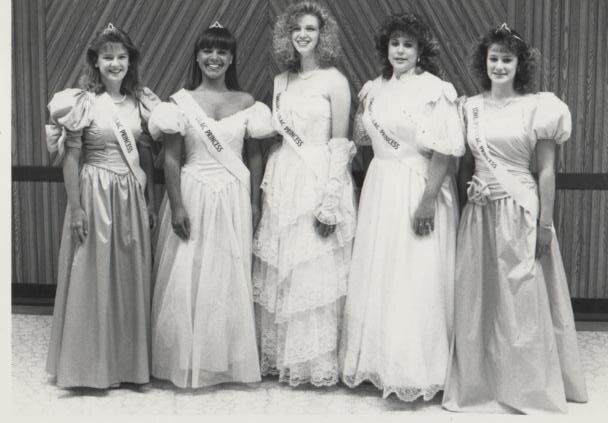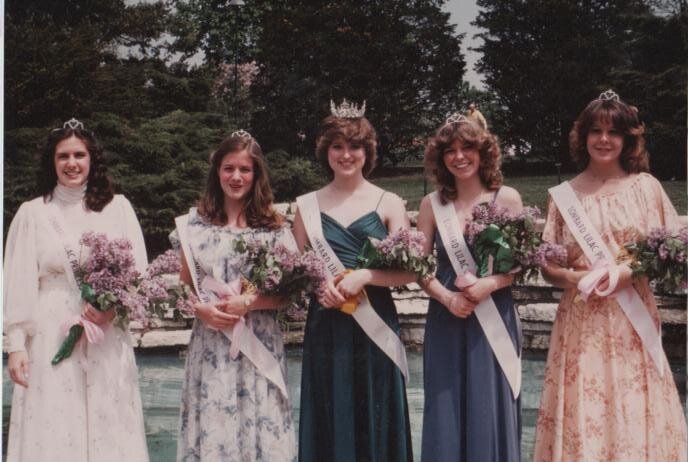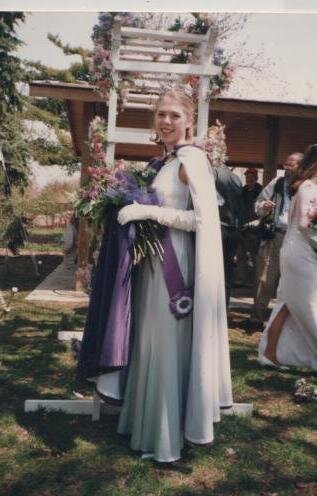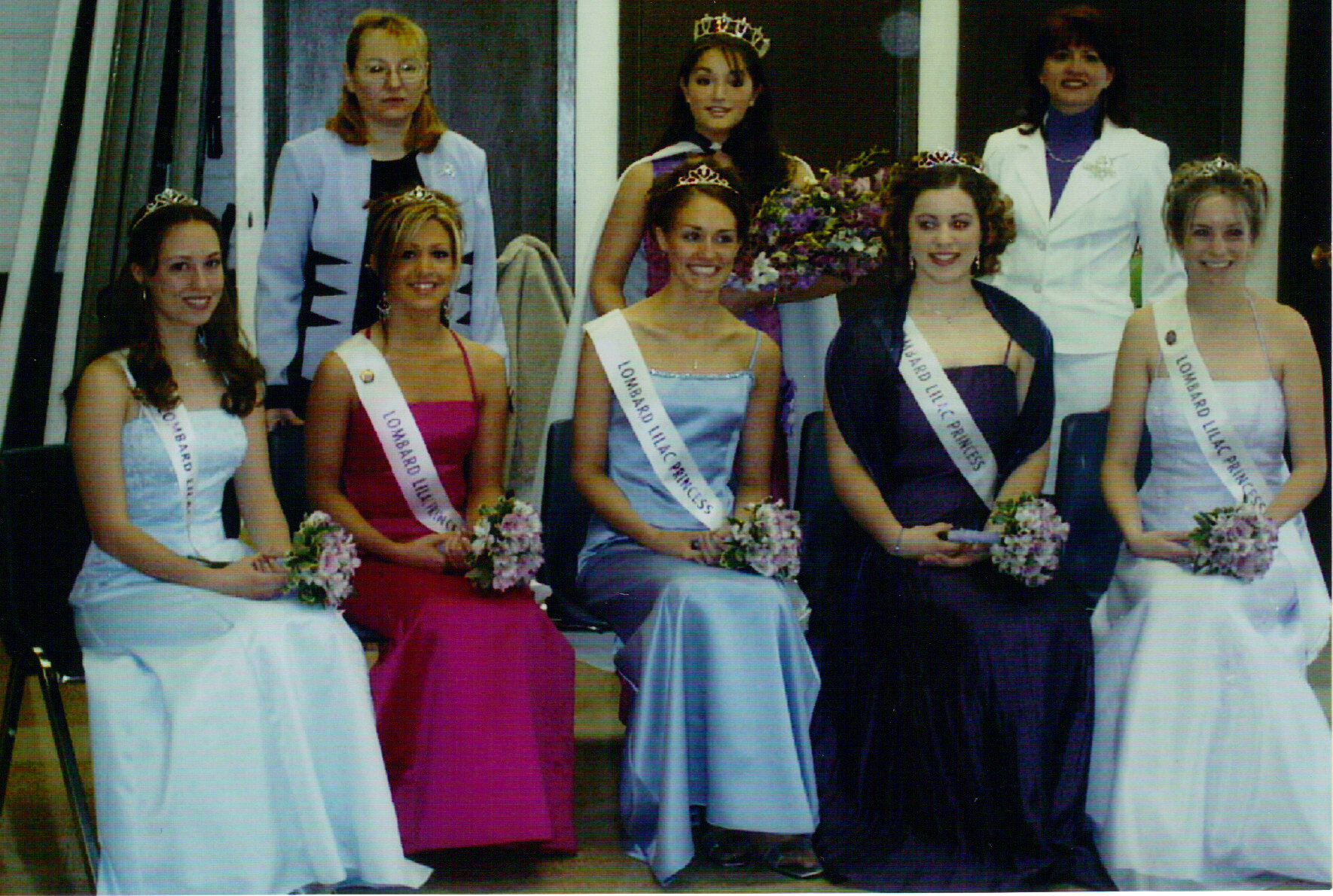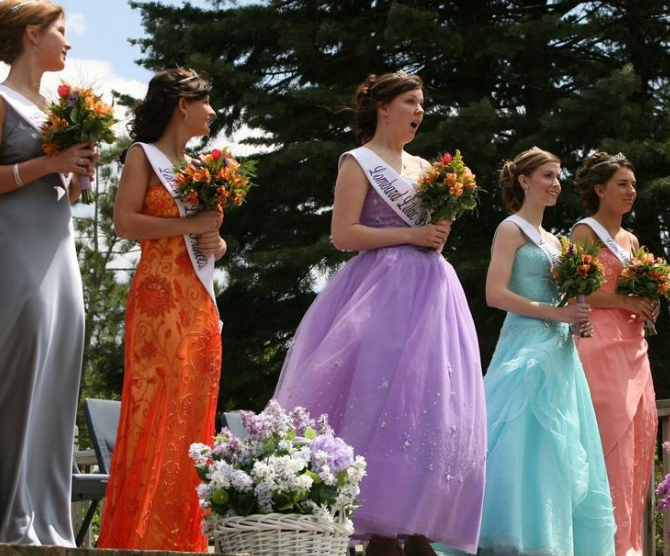A Look at Lilacia Park-The Players Green
/The Pageantry of Lilac Time
Players Green, photograph, c.1940s.
This stunning vista of Lilacia Park is the open meadow flanked by crab apples and tulips stretching west from the pond. This lawn is known as the Players Green on the Jensen blueprints and is best seen from Players Hill. Players Hill was built as an open area overlooking the pond, but in later years, the deck was installed for safety concerns.
First Lilac Festival Booklet, c. 1930.
People can gather on the lawn to watch the Lilac Court and see the Lilac Queen be chosen every May. The festivals in the 1930s were pageants with a large cast of actors following a script written for the occasion. Many Lombard women were recruited to sew costumes for the players while other Lombardians built props for the performances.
The current way of presenting the court and crowning the Lilac Queen started when the Lilac Festival resumed after World War 2.
Jens Jensen understood the connection between performing arts and nature and the need for entertainment spaces in crowded urban areas. When this area was part of the Plum estate, it was planted with rows of lilacs so that Colonel William Plum could study their growth, chart his garden, and cultivate young plants. When Jens Jensen began creating Lilacia Park, originally called The Community Garden, Plum’s lilacs and other plants were carefully rearranged to create the place we all enjoy every spring.
Written By: Jean Crocket Lombard Historical Society Archivist
Presenting of the Court Through the Ages
